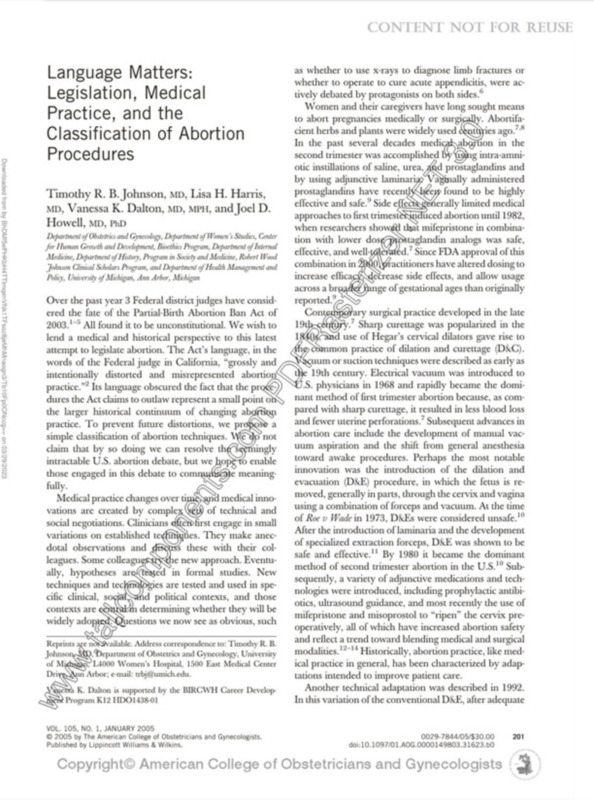Medical Professionals Response
In the early 2000s the conversation surrounding the partial birth abortion procedure reached its climax. Politicians, journalists, celebrities, and more were all giving their two cents on the issue and trying to generate a desired outcome. The medical communities voice got lost in this conversation when the their opinion should’ve been amoung the most valued. This article intended to outline two important things. First, medical procedures are treated on a case by case basis. It’s a mistake to categorize all intact dilation and extraction procedures (D&X, IDX, D&E(v)) as the exact same since each procedure is extremely case and patient specific. Second, the language being used in congressional and supreme court hearings had severely departed from their medical roots and had become completely politicized [9]. This article was written by a series of doctors in 2005 and published in the journal of Obstetrics and Gynecology.
The main point throughout this article is that simply using the term partial birth abortion is full of politicized bias that the medical community does not condone. Partial birth abortion tends to have a pro-life stance associated with it since it intends to push the imagery that the fetus is viable and has been “partially born”. This term became used in almost all court cases and public discourse on the issue. The medical community, as described in this article, was deeply upset by this. The partial birth abortion that was being described in courts and media can be broken down into multiple different procedures. These procedures while sounding similar and actually quite different and pose different ethical and moral questions. Additionally, most of these procedures are used in emergency situations when saving the mothers life is the highest priority [10]. While this article seems to be simply a narrative on medical terminology in political situations, it is part of a larger theme that has continued today. The medical community is consistently left out of the abortion discussion when their expertise and experience is extremely valuable. This article is consistent with many medical professionals' attempts to reassert themselves into the partial birth abortion discussion of the time [11]. The article's target audience is not the general public but other medical professionals as well as people involved in the politicized abortion discussions.
[9] “ACOG Guide to Language and Abortion,” ACOG, https://www.acog.org/contact/media-center/abortion-language-guide
[10] Susan A. Cohen and Rebekah Saul. “The Campaign Against ‘Partial-Birth’ Abortion: Status and Fallout,” The Guttmacher Report on Public Policy, December (1998):
[11] Such as Dr. Haskell in the next exhibit
